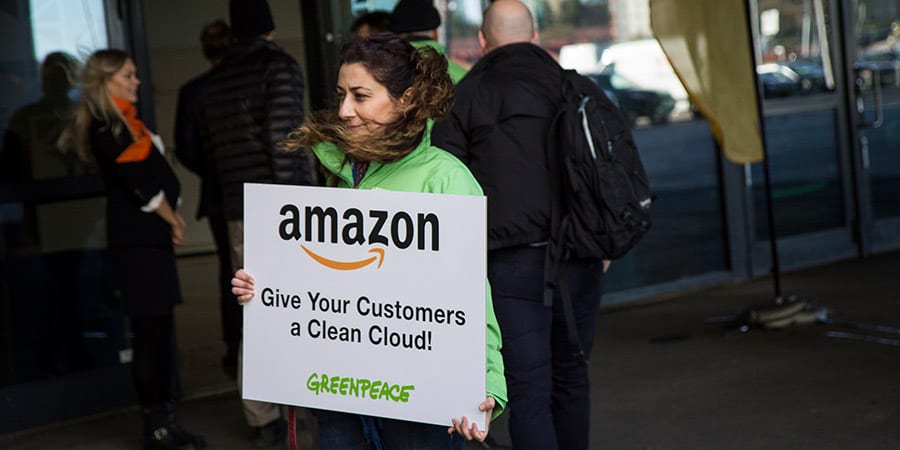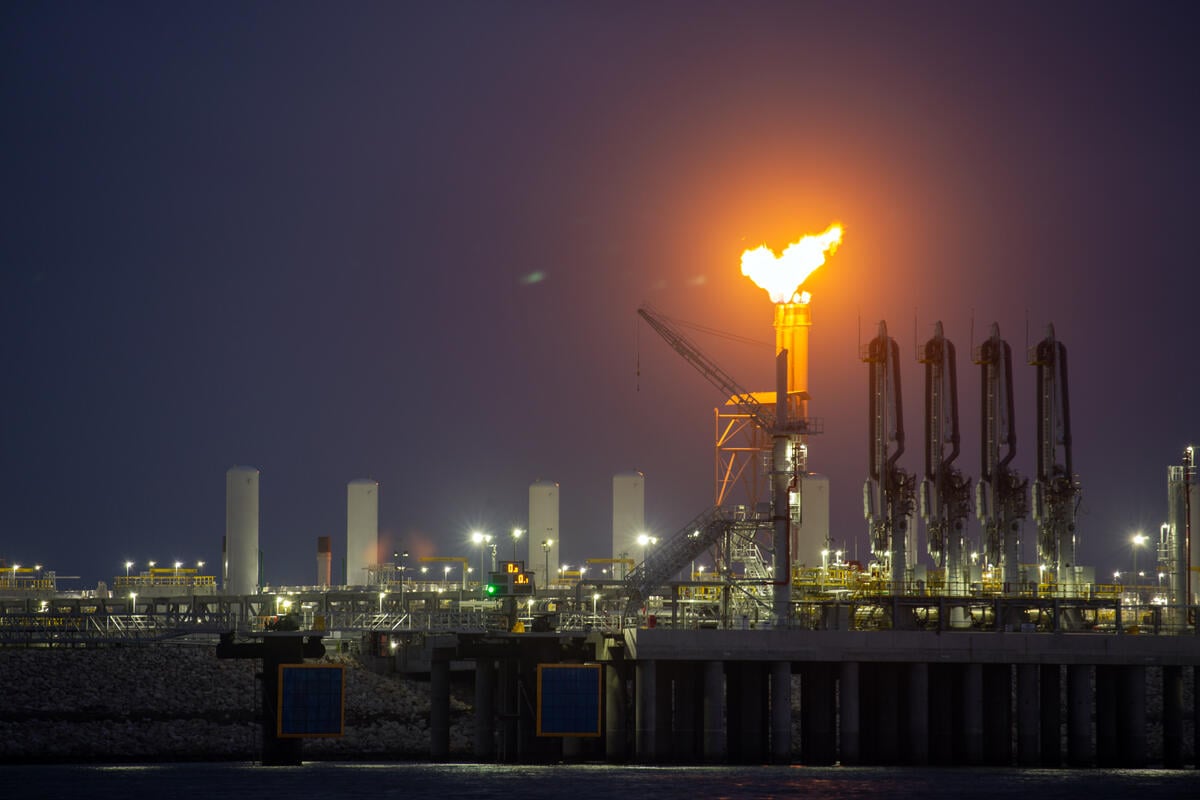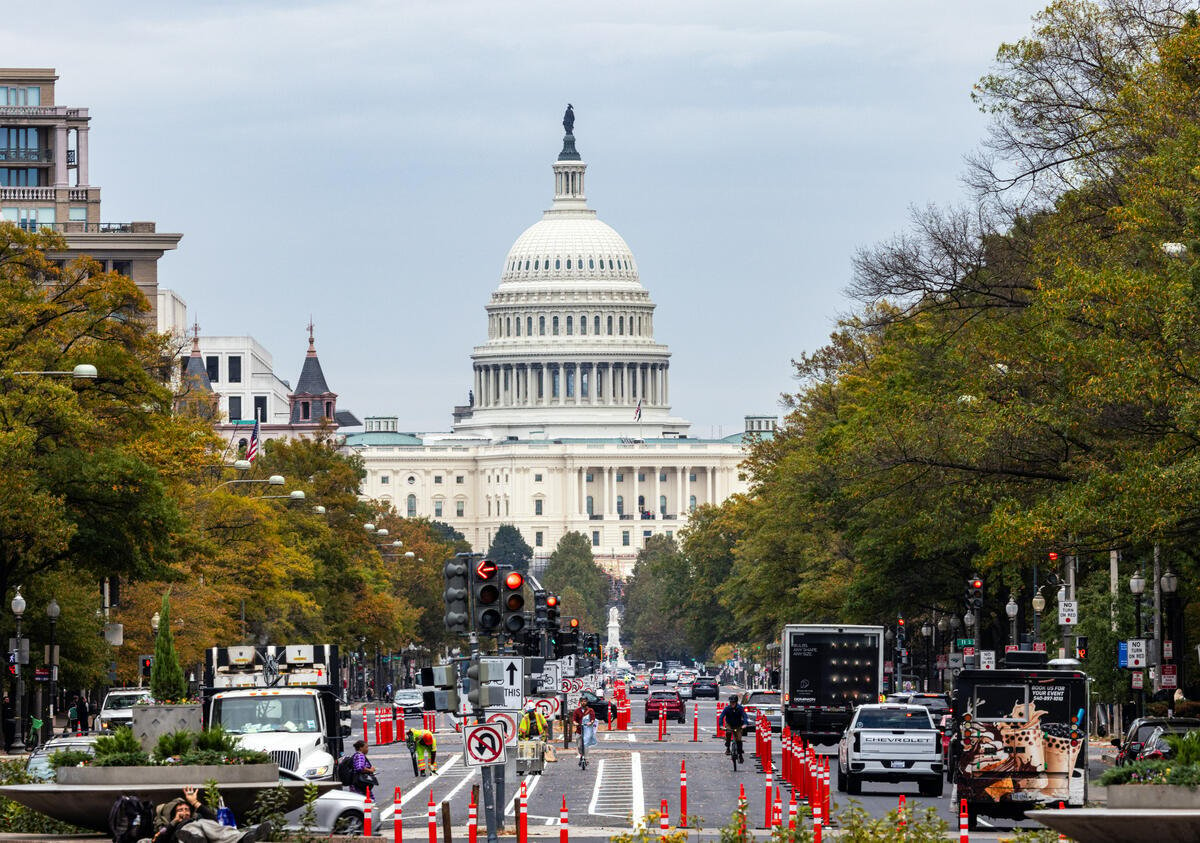“Clicking Clean Virginia” analyzes dirty energy sources fueling “data center alley”
Amazon Web Services is only meeting 12 percent of its renewable energy commitment as its East Coast presence and energy demand grows.

“Clicking Clean Virginia” analyzes dirty energy sources fueling “data center alley”
Amazon Web Services is only meeting 12 percent of its renewable energy commitment as its East Coast presence and energy demand grows.
Greenpeace Finds Amazon Breaking Commitment to Power Cloud with 100% Renewable Energy
“Clicking Clean Virginia” analyzes dirty energy sources fueling “data center alley”
February 13, 2019
Washington, DC — A new Greenpeace USA report, “Clicking Clean Virginia – The Dirty Energy Powering Data Center Alley,” has found that despite high profile commitments to power its data centers with 100 percent renewable energy, the expansion of Amazon and other cloud computing giants in Virginia’s “Data Center Alley” is further fueling climate change with new demand for dirty energy. Amazon Web Services, already one of the largest electricity customers in the state, appears to have abandoned its commitment to renewable energy, with evidence of a dramatic expansion in Virginia over the past two years without any additional supply of renewable energy.
“Clicking Clean Virginia – The Dirty Energy Powering Data Center Alley”
“Despite Amazon’s public commitment to renewable energy, the world’s largest cloud computing company is hoping no one will notice that it’s still powering its corner of the internet with dirty energy,” said Greenpeace USA Senior Corporate Campaigner Elizabeth Jardim. “Unless Amazon and other cloud giants in Virginia change course, our growing use of the internet could lead to more pipelines, more pollution and more problems for our climate.”
Of the data center operators included in the analysis, Facebook has achieved 37 percent renewable in Virginia, Microsoft 34 percent, while Google and Digital Realty are at 4 percent renewable. Apple and Salesforce do not own data centers in Virginia, but have offset 100 percent and 44 percent of their colocation leases with renewables, respectively. Amazon’s data centers in Virginia are powered by only 12 percent renewable energy.
70 percent of the world’s internet traffic passes through data centers housed in a single county in Virginia, earning Northern Virginia the nickname “data center alley” and its spot as the largest data center hub in the world. Unfortunately, dirty energy still powers most of that traffic.
Key analysis of the report includes:
- Electricity demand from data centers in Virginia continues to grow at a dramatic rate, with the total power demand of existing data centers and those under development approaching 4.5 gigawatts, or roughly the same power output as nine large (500-megawatt) coal power plants.
- Amazon Web Services has built the core of its global infrastructure in Virginia, now with 1.7 gigawatts of power demand across 55 Virginia data centers operating or under construction, representing an increase of nearly 60 percent in the past two years alone. The energy required to power all of Amazon’s Virginia data centers at full capacity 24/7 for a year is equivalent to the electricity required to power 1.4 million U.S. homes annually, more than all the homes in Chicago.
- Dominion Energy, the dominant local utility which has one of the lowest percentages of renewable electricity in the country, is using the rapid data center growth in Virginia from Amazon and other tech giants as an excuse to build more fossil fuel infrastructure like the $7 billion Atlantic Coast Pipeline.
- The collective capacity of other Virginia data centers is also driving demand for fossil fuels. Facebook, Microsoft and Google all operate or are building their own data centers in the Commonwealth and have not matched this demand with local renewables. Apple comes the closest in Virginia to reaching 100 percent renewable, contracting enough local solar to cover its colocation load, though the company relies on AWS’s Virginia-based cloud platform for an unreported amount of services.
“Even before Amazon announced Northern Virginia would be its HQ2, the company was already a major electricity customer in the state. Without intervention from data center operators in Virginia like Amazon, the internet will continue to drive carbon emissions with every click, swipe, and share,” Jardim said. “It’s time for Jeff Bezos to think beyond profit and accept responsibility for Amazon’s impact on the global climate.”
The energy footprint of the tech sector as a whole is currently estimated to consume approximately 7 percent of global electricity, but could increase to as much as 20 percent by 2025. Greenpeace has benchmarked the energy performance of leading tech companies since 2009 including its 2017 report, Clicking Clean: Who Is Winning the Race to Build a Green Internet?, which ranked companies leading the charge towards a renewably-powered Internet.
###
Contact:
Cassady Craighill, [email protected], 828-817-3328


